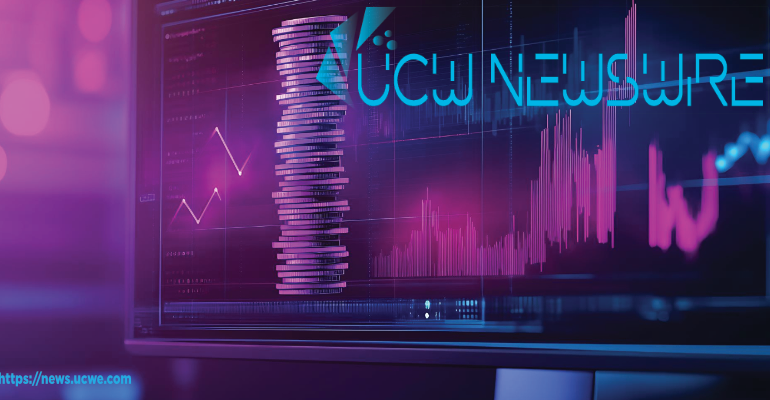Pecu Novus, Solana, and Ethereum: A Comparative Analysis of Tokenomics, Utility, and Future Growth
In the rapidly evolving world of blockchain technology, tokenomics plays a pivotal role in shaping the long-term value and utility of digital assets. While Ethereum and Solana have established themselves

In the rapidly evolving world of blockchain technology, tokenomics plays a pivotal role in shaping the long-term value and utility of digital assets. While Ethereum and Solana have established themselves as leading networks in the industry, a new contender, Pecu Novus, is making waves with its innovative economic model and a vision for simplifying user experience. In this article, we explore the tokenomics of Pecu Novus, compare it side by side with Ethereum and Solana, and discuss its potential as a future store of value and platform for institutional adoption.
A New Frontier in Blockchain Economics
Pecu Novus has emerged as a next-generation Layer-1 blockchain, redesigned in 2022 to overcome many of the challenges faced by earlier networks. With a focus on speed, security, and scalability, Pecu Novus has been engineered to handle the increasing demands of both retail users and financial institutions.
The structured maximum supply of one-billion tokens, combined with a deflationary burn mechanism that eliminates a portion of transaction fees to the tune of 50% of fees generated, ensures that PECU will become increasingly scarce over time, an attractive quality for long-term investors.
Meanwhile, Ethereum and Solana continue to lead with their own tokenomics models. Ethereum, the pioneer of smart contracts, operates under a dynamic supply model where the introduction of EIP-1559 has instituted a deflationary mechanism that burns a portion of transaction fees, though it does not have a fixed maximum supply. Solana, known for its high throughput and low transaction fees, employs a dynamic inflation model designed to incentivize network participation but has faced occasional issues with network stability.
Side-by-Side Tokenomics Comparison (based on publicly available data)
| Feature | Pecu Novus (PECU) | Ethereum (ETH) | Solana (SOL) |
|---|---|---|---|
| Circulating Supply | 237+ Million PECU (subject to deflationary mechanism) | 120+ Million ETH (subject to deflationary mechanism) | 487+ Million SOL (subject to deflationary mechanism) |
| Total Supply | 377+ Million PECU | 120+ Million ETH | 593+ Million SOL |
| Max Supply | 1,000,000,000 PECU | None (but EIP-1559 reduces net issuance) | None |
| Consensus Mechanism | Proof of Time (PoT) | Proof of Stake (PoS) | Proof of Stake (PoS) |
| Transaction Fees | Low & Predictable, with a flat fee model | Historically high, now mitigated by Layer 2 solutions | Generally low, though occasional congestion |
| Scalability | Infinite sharding for autonomous expansion | Relies on Layer 2 scaling solutions | High throughput, but occasional network outages |
Utility and Long-Term Value Proposition
Pecu Novus’s design emphasizes user simplicity and enterprise utility. The platform is built to hide the complexities of blockchain behind an intuitive user interface. Tools like the Pecu Wallet and Pecu Terminal empower users to conduct transactions, mint tokens, and even create NFTs with ease, comparable to making a traditional bank transfer. This focus on usability is key to mass adoption, particularly as financial institutions and businesses look to integrate blockchain solutions into their everyday operations.
Furthermore, Pecu Novus is positioned to be a cornerstone in regulated finance. As governments and financial institutions explore strategic digital asset reserves, which may soon include not just Bitcoin but also Ethereum, XRP, Solana, Pecu Novus, and others, the value proposition of a secure, scalable, and user-friendly blockchain like Pecu Novus becomes even more compelling. With major exchanges yet to list PECU and no ETFs or ETPs currently available, early investors could see significant appreciation once these liquidity channels open up and it not a matter of “IF” but “When”.
A Bright Future for Institutional Adoption
The blockchain industry is at a turning point. With traditional financial institutions increasingly embracing digital assets, the need for secure, compliant, and efficient blockchain networks has never been greater. Pecu Novus, with its innovative tokenomics and enterprise-ready features, stands out as a strong candidate to lead this next wave of adoption. Its ability to support seamless transactions, combined with the deflationary pressure from its burn mechanism and a clear, capped supply, positions PECU as a potential store of value akin to digital gold. Add to that the initiative that will integrate layer-2 blockchains into enterprise level platforms will increase the overall utility of the ecosystem.
Institutional interest is already booming in the crypto space, with strategic investments and regulatory clarity driving the adoption of major assets like Bitcoin and Ethereum. As financial entities consider diversifying their portfolios with next-generation digital assets, Pecu Novus’s comprehensive ecosystem could well become a key component of this new digital finance landscape.
As we have been witnessing, the landscape of blockchain is shifting, and while Ethereum and Solana continue to dominate, Pecu Novus represents the next frontier in blockchain innovation. With a well-defined tokenomics structure, a scalable and secure network, and a focus on simplifying the user experience, Pecu Novus is poised to become a major player in the digital asset ecosystem. As the market opens up to institutional and mainstream investors, the potential for PECU to achieve a market cap that rivals some of the largest blockchain networks is immense.
In this dynamic environment, early adopters and strategic investors should keep a keen eye on Pecu Novus and it’s native token PECU. It could become a supercharged growth engine in more ways than one, helping to drive the future of digital finance and enterprise blockchain adoption.

